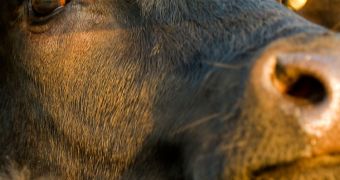All domesticated bovines that live today are the descendants of members of a single herd of wild ox. The conclusion belongs to a new genetic analysis of DNA from a large sample of animals, which was conducted by an international team of researchers.
The wild ox from which all modern cattle originated lived around 10,500 years ago, investigators say. Geneticists from the National Museum of Natural History in France, the University of Mainz in Germany, and the University College London (UCL) in the UK, were part of the study.
The investigators also analyzed a series of cattle bones recovered from archaeological sites in Iran. These bone fragments are believed to be thousands of years old. The genetic data they still contained were then cross-referenced with similar information obtained from modern cattle.
Using a variety of computer simulations, the investigators evaluated the origins of the different DNA sequences they found in the samples. The team took into account a large number of population history scenarios, Wired reports.
The only way the differences they observed could be accounted for was if a small number of individuals, from a now-extinct species of wild ox called aurochs, once formed an 80-strong herd that was domesticated. These ox occupied a range spanning from Europe to Asia.
Their descendants are currently estimated to number about 1.4 billion individuals (figures provided by the United Nations for mid-2011). The lead author of the study was expert Ruth Bollongino, who is based at the Johannes Gutenberg Universität Mainz.
“Getting reliable DNA sequences from remains found in cold environments is routine. That is why mammoths were one of the first extinct species to have their DNA read,” the investigator explains.
“But getting reliable DNA from bones found in hot regions is much more difficult because temperature is so critical for DNA survival. This meant we had to be extremely careful that we did not end up reading contaminating DNA sequences from living, or only recently dead cattle,” she adds.
“A small number of cattle progenitors is consistent with the restricted area for which archaeologists have evidence for early cattle domestication 10,500 years ago,” adds CNRS bio-archaeologist Jean-Denis Vigne, who was also an author of the research paper.
“This restricted area could be explained by the fact that cattle breeding, contrary to, for example, goat herding, would have been very difficult for mobile societies, and that only some of them were actually sedentary at that time in the Near East,” he concludes.

 14 DAY TRIAL //
14 DAY TRIAL //